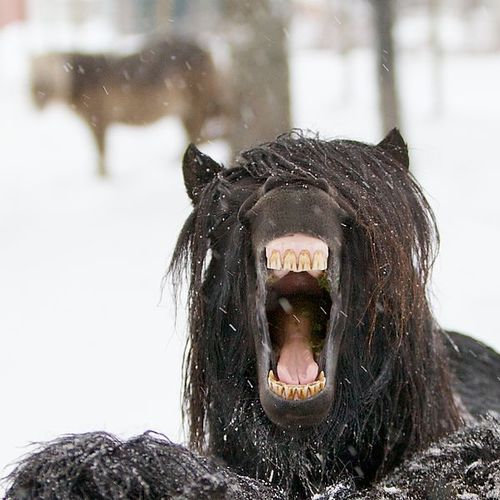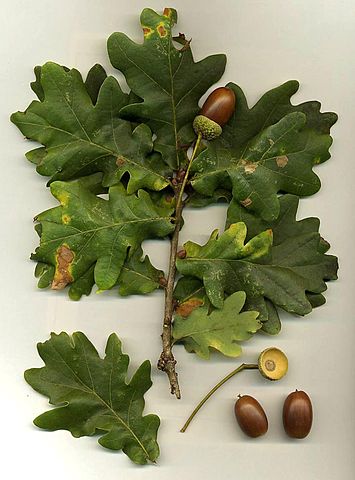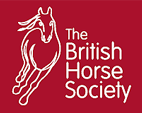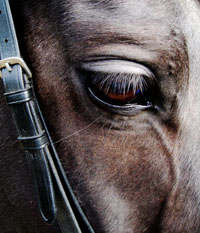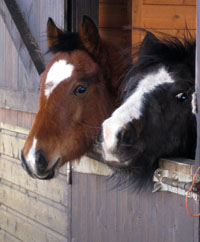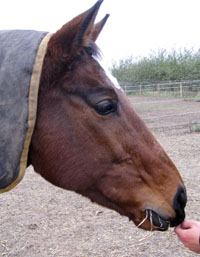The following information on vetting has been produced jointly by the British Equine Veterinary Association and the Royal College of Veterinary Surgeons. It is intended to provide general guidance for both veterinary surgeons and prospective purchasers on what is to be expected of pre-purchase examinations of horses. The term “horse” is meant to include ponies and foals.
BEVA/RCVS Guidance Notes on the Examination of a Horse on Behalf of a Prospective Purchaser (amended 2011)
The aim of the pre-purchase examination is to carry out a thorough clinical examination on behalf of a potential purchaser to identify and assess factors of a veterinary nature that could prejudice the horse‟s suitability for its intended use. Each pre-purchase examination is carried out on behalf of a specific prospective purchaser so that the opinion can be based on that purchaser‟s individual needs and intended use of the horse. Examinations performed on behalf of a seller are not advised except in the case of a few specified auction sales.
Before performing a pre-purchase examination the veterinary surgeon should endeavour to ascertain who is selling the horse and the horse‟s identity. If, as a result of such information, the veterinary surgeon feels any conflict of interest, which means he/she cannot act wholly in the interests of the purchaser, the veterinary surgeon should decline to perform the examination. If the veterinary surgeon feels able to act without conflict, the fact that the seller is an existing client of the veterinary surgeon‟s practice should be declared to the purchaser in advance of the examination. Additionally, if the veterinary surgeon, or his/her practice, have any prior knowledge of the horse from any source, permission should be obtained from the seller for full disclosure to the purchaser of all such information that might be relevant. If this is not possible, for any reason, the veterinary surgeon should decline to perform the examination.
A standardised clinical examination is performed. Its findings will be assessed by the veterinary surgeon, who will form an opinion as to their significance and any possible adverse implications for the prospective purchaser‟s intended use of the horse. The findings and opinion may be reported to the purchaser verbally at the time of the examination or soon afterwards, as well as being documented in a certificate that is issued to the purchaser. If the purchase does not proceed a certificate may not be completed unless the purchaser requires one. Certificates are not transferable to another purchaser.
The pre-purchase examination provides an assessment of the horse at the time of examination to help inform the potential purchaser„s decision whether or not to continue with their purchase. It is not a guarantee of a horse‟s suitability for the intended purpose.
THE EXAMINATION
The standard examination is conducted in five stages, although the exact sequence of the examination may vary. The stages are:
Stage 1: Preliminary examination
This is a thorough external examination of the animal at rest using visual observation, palpation and manipulation to detect clinically apparent signs of injury, disease or physical abnormality. It includes an examination of the incisor teeth, a thorough examination of the horse‟s eyes in a darkened area and auscultation of the horse‟s heart and lungs at rest. Examination of the eyes does not include dilating the pupil but should include examination of internal and external structures.
The examination does not include examination of the inside of the prepuce (sheath), a detailed mouth examination with a speculum, a height measurement or any examination for pregnancy.
Stage 2: Walk and trot, in hand
The animal is walked and then trotted in hand to detect abnormalities of gait and action. Ideally this is carried out on firm, level ground. The horse is turned sharply each way and is backed for a few paces. Flexion tests of all four limbs and trotting in a circle on a firm surface may be carried out if the examining veterinary surgeon considers it safe and appropriate to do so.
Stage 3: Exercise phase
The horse is usually ridden and given sufficient exercise to:
1. Allow assessment of the horse when it has an increased breathing effort and an increased heart rate.
2. Allow assessment of the horse‟s gait at walk, trot, canter and, if appropriate, gallop.
3. Allow assessment of the horse for the purpose of stage five.
If ridden exercise is not possible for any reason then this stage may be conducted by exercising the horse on a lunge, but this fact should be made clear to the purchaser and on the certificate.
Stage 4: Period of rest and re-examination
The horse is allowed to stand quietly for a period. During this time the respiratory and cardiovascular systems may be monitored as they return to their resting levels.
Stage 5: Second trot up
The animal is trotted in hand again to look for any signs of strains or injuries made evident by the exercise and rest stages.
Flexion tests and trotting in a circle
Flexion tests and trotting in a circle on a firm surface are not mandatory parts of the standard procedure, but they can sometimes provide useful additional information about a horse. There may be circumstances when the examining veterinary surgeon concludes that it is unsafe or inappropriate to perform such tests.
Blood Sample
A blood sample may be taken for storage (usually for 6 months) for possible future analysis to detect substances present in the horse‟s system at the time of the examination that might have masked any factors affecting the horse‟s suitability for the purchaser‟s intended use. If a blood sample is not taken then the reason should be noted on the certificate.
Identification of the horse
The horse should be identified by recording the horse‟s markings in the form of a diagram and written description as well as searching for a microchip and inspecting any available documentation. The diagram may be omitted if the presence of a microchip can be confirmed by scanner and the diagram of an accompanying passport matches the horse. In this instance, both microchip and passport numbers should be recorded on the certificate.
Variations from the standard examination
Whilst there is a recognised format for the examination, the examining veterinary surgeon may vary it where there are good practical or clinical reasons. In circumstances where it is not possible or appropriate to complete all the stages, or where the standard five-stage examination is limited to stages one and two at the specific request of the purchaser, the variations from the standard procedure should be made clear to the purchaser and on the certificate. The results of any additional procedures (e.g. radiography or endoscopy) carried out at the request of the purchaser should also be reported and recorded on the certificate or in an addendum to it. The original records of these procedures (such as radiographs, ultrasonographs, photographs) should be retained by the examining veterinary surgeon.
THE CERTIFICATE AND OPINION
The certificate should report the findings of the examination including all significant signs of disease, injury or physical abnormality. The certificate should also include the examining veterinary surgeon‟s opinion as to whether or not, on the balance of probabilities, those findings prejudice the horse‟s suitability for purchase for its intended use.
This opinion of the examining veterinary surgeon is given in the following format:
“In my opinion, on the balance of probabilities, the conditions reported above do / do not prejudice this horse’s suitability for purchase to be used for …”
This wording reflects the fact that there may be other reasonable interpretations of the findings, but it in no way reduces the responsibility of examining veterinary surgeons to examine and observe the horse carefully and to apply to the full their professional knowledge and experience.
If the examining veterinary surgeon considers that the clinical history represents a greater than normal risk of the horse developing future problems (i.e. recurrence or delayed consequences of a prior condition), or that it may do so, this should be indicated on the certificate along with an explanatory note. Despite such observations, the horse may nevertheless be suitable for purchase based on a risk/benefit analysis.
LIMITATIONS OF THE EXAMINATION
Incomplete examinations
If any parts of the five stages are omitted for any reason, the opinion given is based purely upon those parts of the examination that were completed. The incomplete examination will not have identified any clinical signs of disease, injury or abnormality that could only have been revealed by a part of the standard procedure that was omitted.If the purchaser requests a limited (two-stage) examination, the examination will be limited in its scope and may not detect important clinical factors that could otherwise influence their decision to purchase the horse.
Previous treatments
The horse may have received previous or concurrent veterinary treatment unknown to the examining veterinary surgeon. This may be so even where the examining veterinary surgeon is the seller‟s regular veterinary surgeon and has access to clinical records for the horse.
At the time of the examination the horse may have been subject to some previously administered drug or medicament having the effect of masking or concealing some disease, injury or physical abnormality that might otherwise have been clinically discoverable. A blood sample taken at the time of the examination may be used later to seek to determine this.
Ownership
The certificate serves to identify the horse that was examined, but it is not the responsibility of the examining veterinary surgeon to ascertain that the declared seller has legal title in the horse. It is the responsibility of the purchaser to satisfy themselves as to the ownership of the horse before purchase and to verify the records of any microchip with the relevant database.
Age
Without appropriate paper records from foalhood it is not possible to confirm the age of a horse with accuracy. Estimates of age based on a dental examination are imprecise and unreliable and exact ageing using dentition alone should be avoided. In the absence of documentary evidence, the term „aged‟ may be used to refer to a horse considered after examination to be over 15 years of age.
Vices
Vices are objectionable habits, but are not necessarily detectable during the examination. However, if vices, or evidence of vices, are observed during the examination they should be reported to the purchaser and recorded on the certificate and taken into account in the concluding opinion.
Seller’s warranty
The opinion provides no assurances in respect of matters that can only be established by a seller‟s representations to the purchaser. A seller‟s warranty is a matter between the seller and the purchaser and is not the responsibility of the examining veterinary surgeon. The purchaser should consider obtaining a written warranty from the seller covering, for example, matters such as medical or surgical history, height, freedom from vices, temperament, non-administration of drugs prior to the examination and the horse‟s previous or existing uses and performance levels.
Height
For the purposes of this examination, the height of a horse or pony is not the concern of the examining veterinary surgeon.
Insurance
Where possible and if required, the prospective purchaser is advised to confirm that they are able to obtain suitable insurance cover before purchasing the horse.
NB. Pre-purchase examination certificates are suitable for submission to insurance companies with a proposal for insurance of the horse. Insurance examinations carried out for an existing owner of a horse may follow the same format as the five-stage pre-purchase examination, but they will not include an opinion and should not be interpreted as a pre-purchase examination. Insurance examinations should be recorded using the “Certificate of Examination of a Horse for Insurance Purposes”.

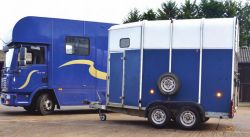 Understanding equine transport regulations can be a complicated task but the Vehicle and Operator Services Agency (VOSA) clarify regulations for horse owners in their free downloadable booklet A Guide for Horsebox and Trailer Owners.
Understanding equine transport regulations can be a complicated task but the Vehicle and Operator Services Agency (VOSA) clarify regulations for horse owners in their free downloadable booklet A Guide for Horsebox and Trailer Owners.